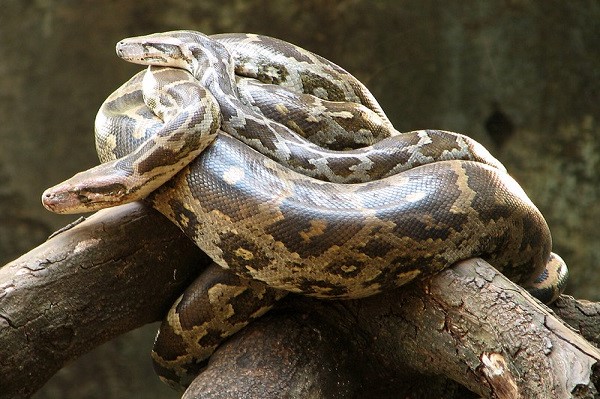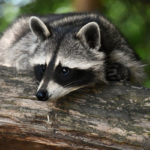
- Brian Moss (President)
- AAAC Wildlife Removal
11/28/2022 Total words : 1426
What Are the Predators of Snakes?
Snakes are excellent hunters and are known to be very effective predators. They are some of the most feared animals worldwide, and with good reason. But what happens when the tables are turned and snakes become the prey? Who are their predators? We'll look at some of the most common animals that eat snakes and learn a little about each. What animals eat snakes? Snake predators, from the smallest rodents to giant birds, come in all shapes and sizes. Some predators hunt snakes actively for food, while others may stumble across them while searching for other prey. Coyotes Coyotes have an excellent sense of hearing and smell. They pursue snakes by utilizing both of these traits. They use pouncing to capture them, like foxes catching voles and mice. Coyotes use their jaws to destroy their prey; some individuals have even seen them throw snakes into the air. Coyotes are brilliant animals; aware snakes might be dangerous to their young. A coyote might hunt a snake for reasons other than food, such as to defend its den. Foxes Foxes don't have a particular preference for what they eat, although they tend to avoid specific snakes when hunting. Water snakes and aggressive, venomous snakes are off-limits. Foxes don't mind eating dead snakes, either. We may find it disgusting, but that's how scavengers live! Foxes are more than happy to pick up eating another meal that another animal hasn't finished, whether the reason for death was natural or not. Bobcat One of the most fearless predators in nature are bobcats. They can quickly bridge the gap between themselves and a snake to kill it before the snake has a chance to strike back, thanks to their incredible jumps. They are among the few natural animals with the guts to kill snakes. If bitten, they are not immune to the snake venom. But by timing its blows and slapping the rattlesnake's face downward, they manage to escape getting bitten. Wolverine The wolverine is a robust and adaptable scavenger and predator. It climbs and spends a lot of time catching birds or snakes in trees. Wolverines go 15 miles daily searching for food and excavate burrows to attack other hibernating animals. Mongoose Mongooses are famous for daring attacks on venomous snakes like king cobras. They can fight and eliminate poisonous snakes because their specialized acetylcholine receptors make them immune to poison. Their rapid reflexes and thick coats are quite helpful in battles with snakes. Honey Badger Honey badgers love hunting king cobras. They have a very strong resistance against snake venom and are always looking out for snakes to eat. The honey badger keeps an eye out in the dense underbrush, trees, and even caves for animals on its food chain because they are seen as high-yield meals. The predatory badger consumes more than half of its total diet of snakes during the warmer months when snakes are most active. Scientists have not adequately explained the immunity of the honey badger from venomous snakes such as cobras and puff adders. One honey badger observed by researchers passed out after consuming a puff adder's head. The badger appeared to have died, but two hours later, it awoke from a hazy nap and staggered away. Hedgehog The hedgehog's resistance to various toxins is one of its peculiar and exceptional traits. It enables the animal to devour poisonous snakes and insects with little to no consequence. Hedgehogs have been known to eat all sorts of poisonous creatures, including scorpions, centipedes, and even venomous snakes. Other Snakes Many snakes eat other snakes, including members of their own species. This is particularly common in areas where there are large populations of snakes and not enough food to go around. These "snake-eat-snake" interactions usually involve younger, smaller snakes being eaten by larger ones. Many snakes are immune to the venom of other snakes and will actually hunt and eat them. This type of behavior, however, is common in snakes. Rumor has it that some earned the title "king," whether in the desert or the forest, for their delight in ruling over its snake kingdom while happily devouring their kind. Here are some examples of snakes that prey on other snakes: King Cobra The king cobra or "Ophiophagus hannah," meaning "snake eater," is the world's longest poisonous snake. While these predators will devour giant lizards and other similar cold-blooded animals, they prefer to feast on snakes. Some have a terrifying 18-foot span. The king cobra's venom is strong enough to kill an elephant with just one bite, and it can strike at speeds of up to 12 miles per hour. Other snakes surely don't stand a chance against this reptilian king. Kingsnake Like the king cobra, the "king" part of their name refers to their propensity to kill venomous snakes and other reptiles. These North American king snakes prefer venomous species such as rattlesnakes, cottonmouths, and copperheads. These snakes' venom does not affect them, so they can eat other snakes whenever they want. Kingsnakes rely on constriction to subdue their prey because they lack venom. Eastern Indigo Snake The Eastern indigo snake is a nonvenomous long black snake. It is a long snake native to North America, with males reaching 7 to 9 feet and females being shorter. They are not constrictors, like kingsnakes, and instead, rely on chasing and brute force to take down prey. When they catch prey, they pin it against a hard surface and suffocate it with a powerful bite. Copperheads, cottonmouths, and rattlesnakes are its favorites. They may be immune to rattlesnake venom, which allows them to be effective predators of venomous vipers and keep their populations in check. Coachwhip Coachwhips are non-venomous, long, and slender snakes native to the Americas, most common in South America. They have a distinctive patterning that resembles a braided whip and black or dark brown coloring that lightens as it approaches the tail. These snakes actively seek prey, reaching speeds of up to 4 miles per hour in pursuit. They subdue prey without venom or constriction, instead striking out and grasping victims in their jaws. They eat them alive or dead. Large Birds Large birds are also a threat to snakes, as they will swoop down and snatch them up in their talons. This is especially a problem for snakes that bask in open areas, like rattlesnakes and garter snakes. These flying hunters use their powerful beaks and talons to kill their prey, and they are not afraid of snakes. In fact, many birds will target snakes as a food source. Some of the most common predators of snakes are: Snake Eagle The brown snake eagle is a large raptor that is only found in Africa. They prefer woods or grasslands with plenty of tree cover. The brown snake eagle gets its name from its almost uniformly dark brown plumage, as the name implies. Brown snake eagles eat all types of snakes, including adders, cobras, and black mambas. Owl Large owl species, such as Great Horned Owls, Barn Owls, and Barred Owls, are common predators of medium-sized snakes. Snakes are not the primary food source for these birds, but they will opportunistically hunt and eat them. Falcon Like the other birds of prey on this list, Falcon loves to eat snakes. The Laughing Falcon, in particular, is notorious for eating snakes in its range in South and Central America, even eating highly venomous Coral Snakes. Hawk Hawks swoop down and flap their wings to distract the snake before quickly grabbing it behind the head and carrying it away. Hawks will not only eat non-venomous snakes but will also eat venomous snakes. Humans Humans hunt snakes for food. Snake meat is a delicacy in some cultures. According to ancient Chinese medical texts, snake soup has various medicinal benefits, including the cure of bodily ailments, blood nourishment, skin quality improvement, and an increase in one's qi or energy levels. People may even hunt snakes for their skin, to make clothing or other items in some cases. Final Word So, there you have it! These are some of the wild animals that prey on snakes. Did some of them surprise you? Like other animals in the animal kingdom, Snakes are an essential part of the ecosystem, and their survival is crucial for the balance of nature. If you see a snake, always keep a distance and admire it from afar. Please do not attempt to handle or capture snakes from their natural habitat, as they can be dangerous. Leave these slithering reptiles alone, and they will do the same.
Snake Breeding Season
With the exception of Antarctica, every continent is home to almost 3,000 venomous snakes or nonvenomous snake species. Snakes cause excessive fear in many people due to their silent, slithering mobility and quick defensive reactions. On the other hand, most snakes prefer to stay away from people and concentrate on living their own lives, including lazing in the sun, eating delicious meals, and producing more snakes. When Is Mating Season For Snakes? Snake mating season gets determined by environmental factors such as temperature, sunlight, food availability, and rainfall. Only healthy, energetic females will reproduce, as laying eggs and carrying live young is physically demanding. This means snakes that live in cooler climates typically mate shortly after emerging from hibernation in early spring, so their young are born during the hot summer months. Mating can occur all year for snakes that live in tropical areas. For most species, snakes breed in the springtime. Between March and May, temperatures rise and food becomes more plentiful. Mating season can last anywhere from a few weeks to a few months, depending on the species. Some snakes mate multiple times during this period, while others only mate once. Sexual Maturity Most snakes mate when they are sexually mature. Sexual maturity is at different ages depending on the species of snake. Snakes' ability to reach sexual maturity also depends as much on their size, diet, and general health as on their age. Most healthy, well-fed snakes mature sexually between 2 and 3. There are some differences; for instance, Burmese pythons usually attain sexual maturity between the ages of 4 and 5 years, while black rat snakes don't mature enough to have children until they are at least seven years old, with some females delaying reproduction for as long as ten years. Once a snake is sexually mature, it will mate every year for the rest of its life. Types of Snake Reproduction A female snake can reproduce in several ways, depending on the species. The different types of reproduction are oviparous, viviparous, ovoviviparous, and parthenogenesis. Oviparous Oviparous snakes lay eggs. The female will find a safe place to deposit her eggs, such as in a hollow log or underground burrow, and then leave them to fend for themselves. The eggs are usually soft-shelled and require high humidity levels to stay moist. The snake eggs will desiccate and die if the environment is too dry. Most snake species are oviparous, including all boas, pythons, vipers, and cobras. Some better-known oviparous snakes are the king cobra, eastern brown snake, and garter snake. A mother snake living in hot climates typically lays fertilized eggs, as the young would not survive the high temperatures if born alive. Viviparous The viviparous snakes give birth to live young, fully formed and independent, meaning they don't need egg incubation and typically have shorter gestation periods than oviparous snakes. This is because the eggs would hatch inside the mother and use up resources for their survival. Only a tiny minority of snake species are viviparous, including the anaconda, boa constrictor, and garter snake. Some vipers, such as the Asiatic sand viper, can also give birth to live young. Viviparity is more common in snakes that live in cooler climates, as the young are born in a more advanced state and have a better chance of surviving the cold temperatures. Viviparous snakes typically have longer lifespans than oviparous snakes, as they can reproduce more frequently. Ovoviviparous The ovoviviparous reproductive strategy combines oviparity (egg-laying) and viviparity (giving birth to live young). This method is less common than either of its parts, but it can be found in some snake species, such as the green tree python and king cobra. Ovoviviparous snakes have several advantages over other types of reproducing snakes. The eggs get protected inside the mother's body, making them less likely to be damaged or eaten by predators. The young are also born in a more advanced state and can fend for themselves immediately, which increases their chances of survival. Ovoviviparous snakes typically have shorter lifespans than oviparous or viviparous snakes, as they expend much energy producing eggs and caring for their young. Asexual reproduction or parthenogenesis Asexual reproduction, or parthenogenesis, is a type of reproduction that does not involve fertilization by a male. In snakes, this type of reproduction can occur when a female is storing sperm from a previous mating but does not encounter a male for an extended time. After the stored sperm gets used up, the female will lay eggs that will hatch without being fertilized. Asexual reproduction is relatively rare in snakes and is only known to occur in a few species, such as the Brahminy blind snake and the garter snake. It is more common in lizards and other reptiles than in snakes. Parthenogenesis can be advantageous for snakes as it allows them to reproduce without needing a mate. However, it can also lead to inbreeding and genetic defects. Mating Habits During mating season, male snakes often travel long distances to find a mate. They will compete with other males for the attention of the females and will sometimes engage in physical fights. The female snakes usually remain in their home ranges during this time. Once a male snake has found a suitable mate, he will court her by entwining his body around hers and rubbing his chin on her head. If she is receptive, they will then mate. Snake Eggs The identification process of snake eggs is relatively simple compared to bird eggs. Snake eggs are usually white or off-white, whereas bird eggs are brightly colored and decorated. However, other reptile eggs, such as those of alligators and turtles, can be challenging to differentiate from snake eggs. What Do Snake Eggs Look Like? Snake eggs come in many different shapes and sizes depending on the species of snake. They can be smooth or have a rough, scaly surface. Most snake eggs are oval and have a leathery shell that helps to protect them from predators and the environment. The shell is also semi-permeable to enable gas exchange and for the young to breathe. The color of snake eggs also varies, but they are typically white or pale yellow. Some snakes will lay their eggs in a nest, while others, like garter snakes, will drop their eggs in a secluded place. How Many Eggs Does a Snake Lay? Snakes can lay anywhere from one to forty eggs at a time, depending on the species. Some snakes, such as king cobras, will lay more eggs than others, like garter snakes, who typically only lay a few eggs at a time. Where Do Snakes Lay Their Eggs? Snakes generally don't build nests to lay their eggs in - they will instead search for a sheltered spot on the ground. Some snakes will lay their eggs amongst leaf litter or under rocks, while others may bury them in abandoned animal burrows. King cobras are an exception, as they will create nests out of leaves and other debris by moving them around with their bodies. Both wild and captive king cobras have been seen to engage in this behavior. Snake Eggs Incubation The average time for snake eggs to hatch is 57 days, but the time can vary depending on the kind of snake. Some eggs hatch in just 40 days, while others take up to 70 days. What To Do If You Find a Clutch of Snake Eggs? The best thing to do if you find a clutch of snake eggs is to leave them alone. The mother snake knows what she's doing and how to take care of her eggs. If you move or disturb the eggs, you could damage the snake inside and prevent it from hatching. If you find the eggs while rearranging sticks, leaf litter, or mulch, put the materials back on top of the eggs without disturbing them. Need Help With Snake Infestation? If you need help with snakes on your property, AAAC Wildlife Removal is the best company to call. We'll take care of the problem quickly and efficiently so you can feel safe in your home. We'll also ensure that no other snakes can get into your home, so you won't have to worry about these slithery creatures again. Contact us today to schedule a consultation! Conclusion Now that you understand how snakes reproduce, you can appreciate the incredible diversity of these creatures. If you see plenty of snakes in your area, try to identify them and think about the fascinating process that led to their existence. You never know when you might come across one of their eggs! If you want to learn more, feel free to do so. To delve deeper into the topic of snake breeding seasons and the potential dangers associated with snakes, click here: snake breeding season.

- Brian Moss (President)
- AAAC Wildlife Removal
11/28/2022
Total words : 1459

- Brian Moss (President)
- AAAC Wildlife Removal
11/28/2022 Total words : 1459
Snake Breeding Season
With the exception of Antarctica, every continent is home to almost 3,000 venomous snakes or nonvenomous snake species. Snakes cause excessive fear in many people due to their silent, slithering mobility and quick defensive reactions. On the other hand, most snakes prefer to stay away from people and concentrate on…














